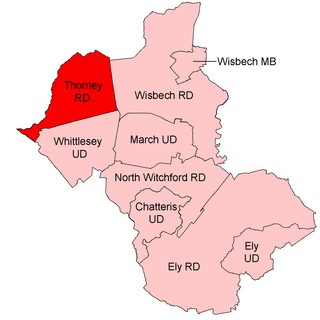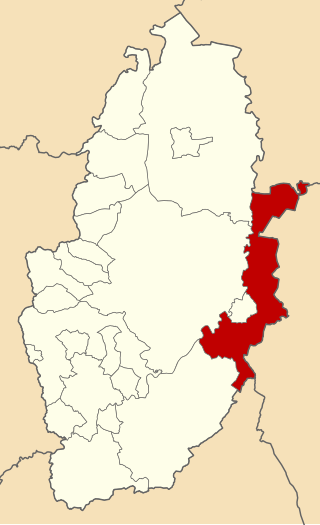Related Research Articles

The Parts of Holland is a historical division of Lincolnshire, England, encompassing the south-east of the county. The name is still recognised locally and survives in the district of South Holland.

South Staffordshire is a local government district in Staffordshire, England. The district lies to the north and west of the West Midlands county, bordering Shropshire to the west and Worcestershire to the south. It contains notable settlements such as Codsall, Cheslyn Hay, Great Wyrley, Penkridge, Brewood, Coven, Essington, Huntington, Weston-under-Lizard, Bilbrook, Wombourne, Himley, Perton and Featherstone. Codsall is the main administrative centre of South Staffordshire District. Many of the villages form both commuter and residential areas for the nearby towns of Cannock, Stafford and Telford, as well as the wider West Midlands County.
Burford was a Rural district in Shropshire in England from 1894 to 1934.
Kettering was a rural district in Northamptonshire in England from 1894 to 1974.

Thorney was a rural district in England from 1894 to 1974, situated to the east of Peterborough.
Spalding was a rural district in Holland in Lincolnshire, England from 1894 to 1974.
Bowland was a rural district in the West Riding of Yorkshire from 1894 to 1974. It was named after the Forest of Bowland, which it included.
Repton was a rural district in Derbyshire, England from 1894 to 1974.
Tamworth was a rural district in the English Midlands from 1894 to 1965.
Northampton was a rural district in Northamptonshire, England from 1894 to 1974.

Newark was a rural district in Nottinghamshire, England from 1894 to 1974.

Bingham was a rural district in Nottinghamshire, England from 1894 to 1974.
Gnosall was a rural district in Staffordshire, England from 1894 to 1934. It was formed under the Local Government Act 1894 from that part of the Newport Rural Sanitary District which was in Staffordshire.
Newport was a rural district in Shropshire, England from 1894 to 1934.
Wellington was a rural district in Shropshire, England from 1894 to 1974.
The Daventry Rural District was a rural district in Northamptonshire, England from 1894 to 1974. It entirely surrounded the municipal borough of Daventry. The district was administered from Daventry but did not include the town.
Drayton or Market Drayton was a rural district in Shropshire, England from 1894 to 1974. It was created by the Local Government Act 1894 under the name 'Drayton', from that part of the Market Drayton rural sanitary district which was in Shropshire.
Blore Heath was a rural district in Staffordshire, England from 1894 to 1932.
Seisdon was a rural district in Staffordshire, England from 1894 to 1974. It lay to the west of Wolverhampton and was formed under the Local Government Act 1894 based on the Seisdon rural sanitary district.